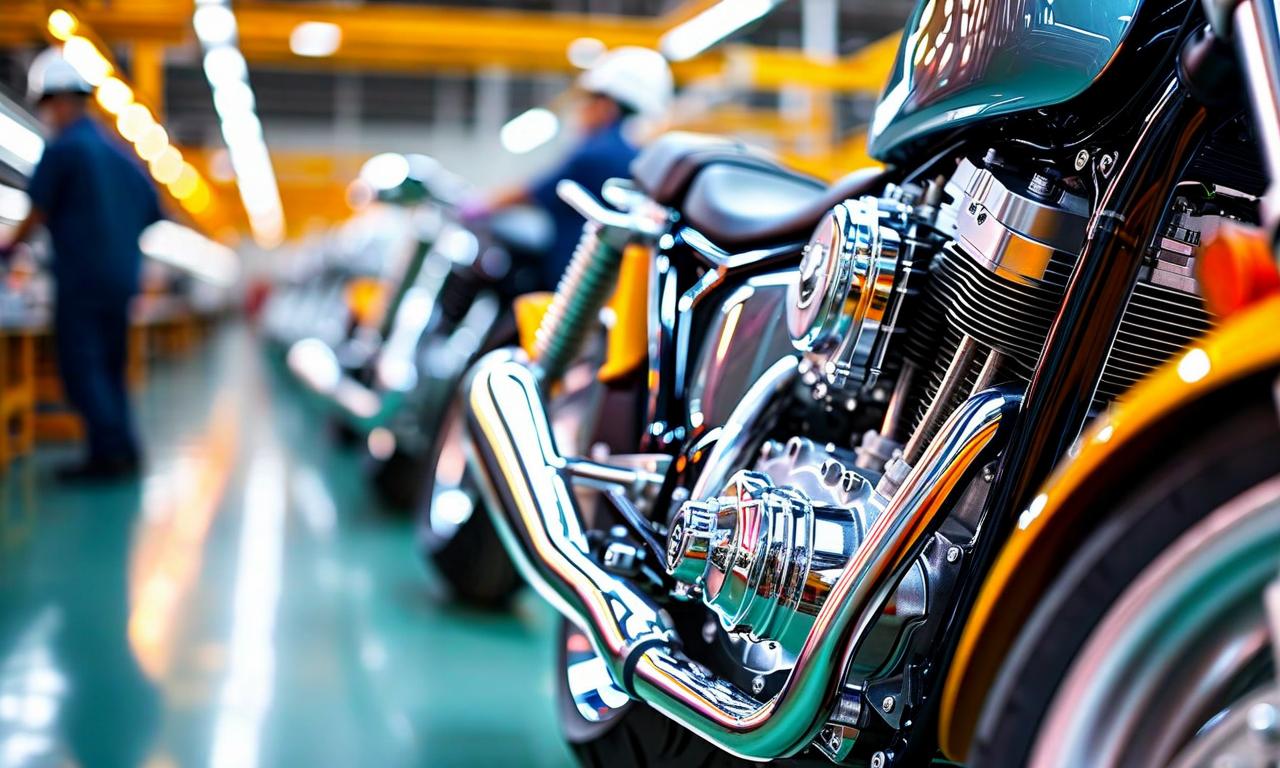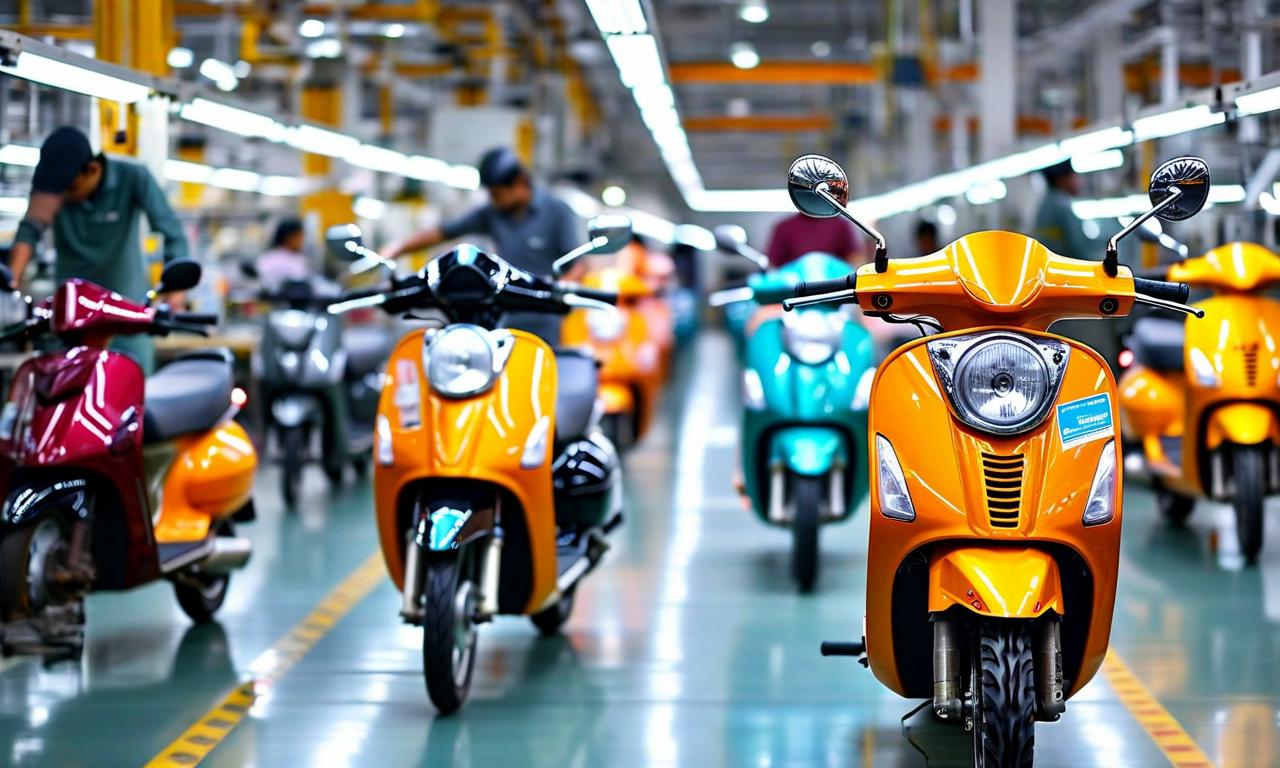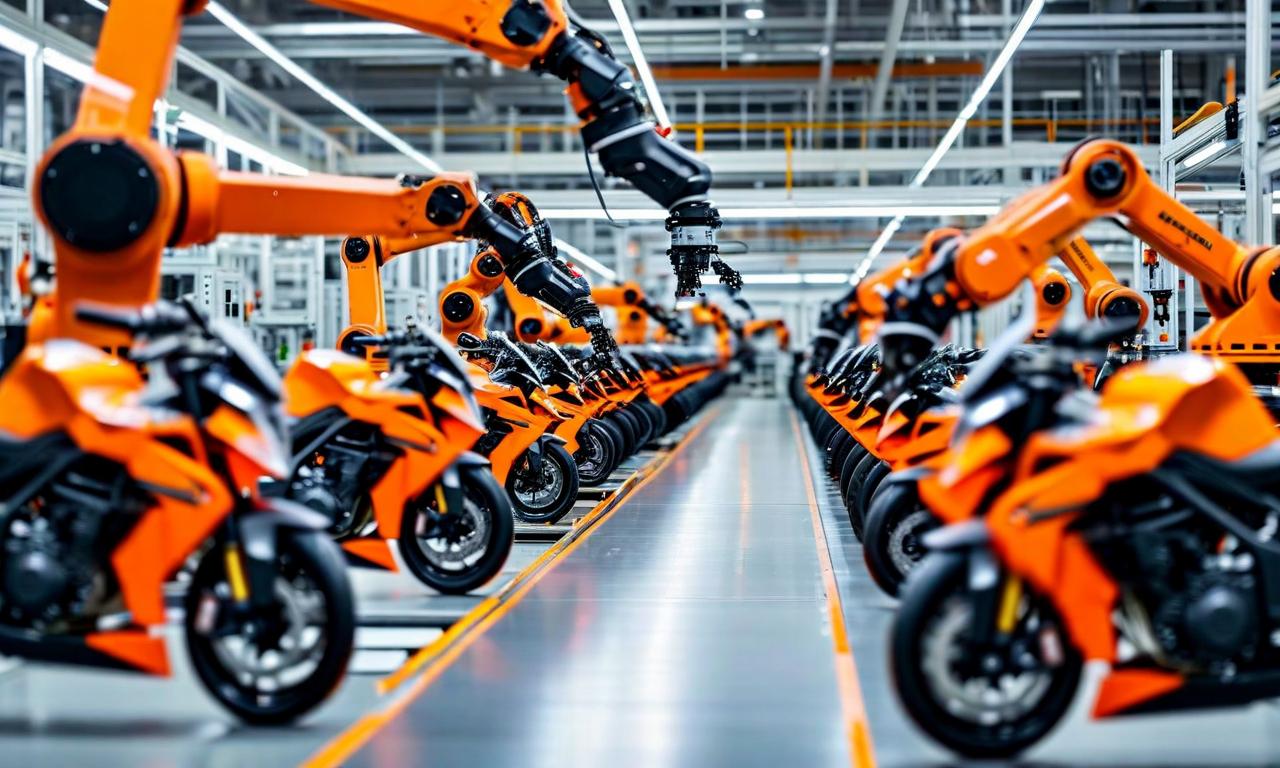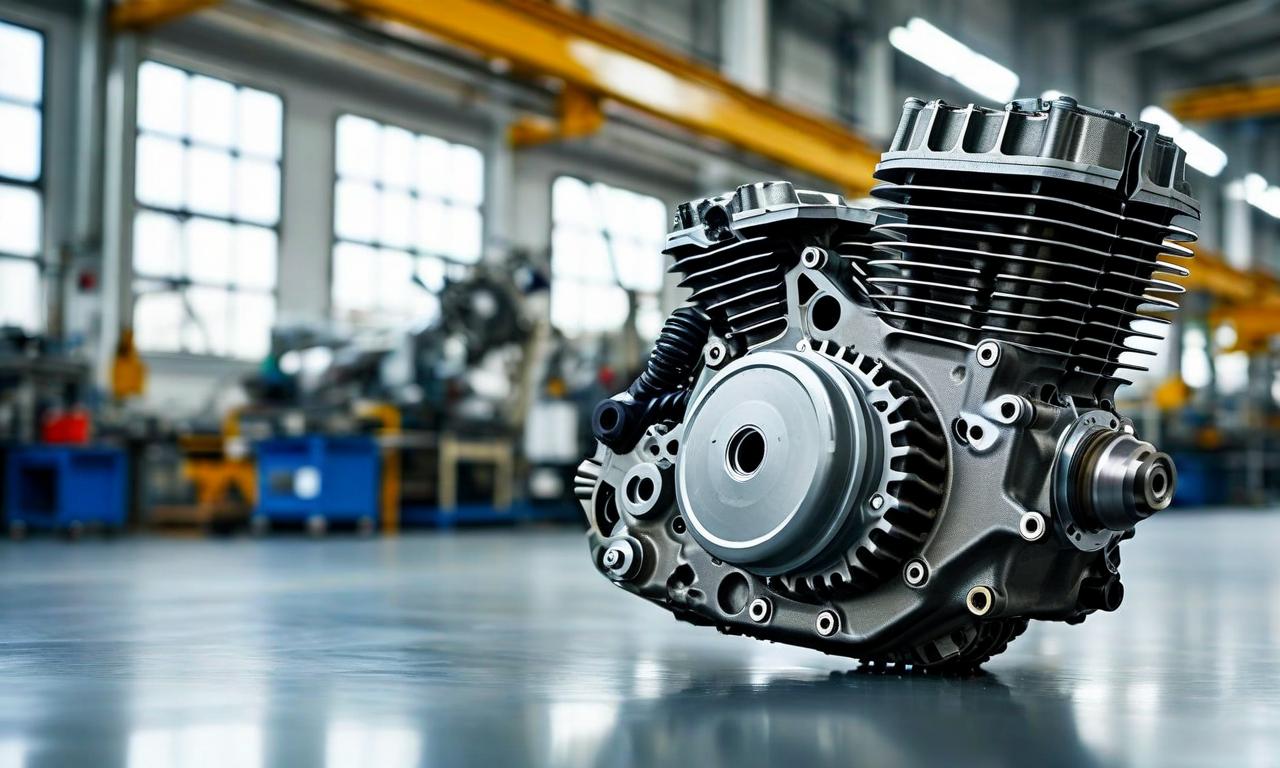Bajaj Auto's Q1 Performance Driven by Electrification, Premiumisation, and Exports; Plans Electric Motorcycles and E-Rickshaw Launch
Bajaj Auto's Q1 results show a 6% increase in revenue to ₹12,584.00 crores, with 5% growth in profit after tax to ₹2,096.00 crores. The company's performance was driven by strong exports, growth in electric vehicles (now over 20% of domestic revenues), and success in premium motorcycles. Bajaj Auto emerged as the leading electric three-wheeler player and announced plans to develop electric motorcycles under its Boxer and Pulsar brands. The company is also set to enter the e-rickshaw market with its new brand Riki.

*this image is generated using AI for illustrative purposes only.
Bajaj Auto Limited has reported a resilient financial performance for the first quarter, with growth driven by electrification, premiumisation, and exports. The company's strategic focus on these areas has helped offset challenges in the domestic motorcycle segment.
Financial Highlights
- Revenue from operations increased by 6% year-over-year to ₹12,584.00 crores
- EBITDA grew by 3% to ₹2,500.00 crores
- Profit after tax rose by 5% to ₹2,096.00 crores
- EBITDA margin stood at 19.70%, down 50 basis points quarter-on-quarter, primarily due to lower dollar realization
Segment Performance
Exports
Bajaj Auto's export revenues hit a historic peak in Q1, with double-digit growth across Africa, Latin America, and Asia. The revival of exports to KTM post-restructuring further boosted the quarter's performance.
Electric Vehicles
Electric vehicles now constitute over 20% of domestic revenues, up from early teens in the same period last year. The Chetak electric scooter saw its retail volumes more than double year-over-year, contributing to half of the industry's incremental volume.
Premium Motorcycles
KTM and Triumph brands combined billed over 25,000 bikes in the domestic market, up 20% year-over-year. The company introduced new models like the KTM Enduro R and Triumph Scrambler 400XC to expand its premium portfolio.
Commercial Vehicles
Bajaj Auto emerged as the leading electric three-wheeler (L5 category) player, with retail volumes growing approximately 3x year-over-year and market share increasing by 1000 basis points to 36%.
Strategic Initiatives
The company continues to focus on electrification, with the Chetak electric scooter now available across 750 cities. The affordable Chetak 3001 model, an upgrade from the 2903 model, offers superior range and performance while improving unit economics.
Bajaj Auto is also strengthening its position in the premium motorcycle segment through its partnerships with KTM and Triumph, introducing new models to cater to diverse customer preferences.
Future Plans and Developments
Bajaj Auto Managing Director Rajiv Bajaj announced plans to develop electric motorcycles under its Boxer and Pulsar brands, targeting commuter and sports segments respectively. This move aims to expand the company's electric vehicle portfolio beyond scooters and three-wheelers.
The company's new scooter platform has been delayed to Q3 or Q4 of FY26 due to supply chain constraints involving rare earth magnets.
In a significant development, Bajaj Auto will enter the e-rickshaw market with its new brand Riki, launching sales on August 10 in four initial markets. Production has already commenced, and the company plans a phased rollout approach. Bajaj emphasized that the company is still learning electric technology aspects including technology, product development, and customer service.
Regarding KTM, Bajaj stated that the Austrian brand is recovering, with exports from India back to 14,000 units. He emphasized that resetting KTM's cost structure and restoring its premium brand positioning are key to the brand's future. Bajaj Auto holds a 49.9% stake in KTM's parent company PTW Holding AG.
Outlook
Despite challenges in the domestic motorcycle segment, Bajaj Auto's balanced business model and focus on high-growth areas have enabled the company to deliver a strong performance. The company's continued investments in electrification, premiumisation, and export markets position it well for future growth.
Dinesh Thapar, CFO of Bajaj Auto, commented on the results, stating, "Our Q1 performance demonstrates the resilience of our diversified business model. We continue to see strong traction in our focus areas of electrification, premium motorcycles, and exports, which have more than compensated for the subdued performance in the domestic motorcycle segment."
As Bajaj Auto navigates the evolving automotive landscape, its strategic initiatives in electric vehicles and premium segments, coupled with its strong export performance and upcoming electric motorcycle and e-rickshaw launches, are expected to drive sustainable growth in the coming quarters.
Historical Stock Returns for Bajaj Auto
| 1 Day | 5 Days | 1 Month | 6 Months | 1 Year | 5 Years |
|---|---|---|---|---|---|
| +0.78% | +3.09% | +1.80% | +9.47% | +4.47% | +171.72% |

















































